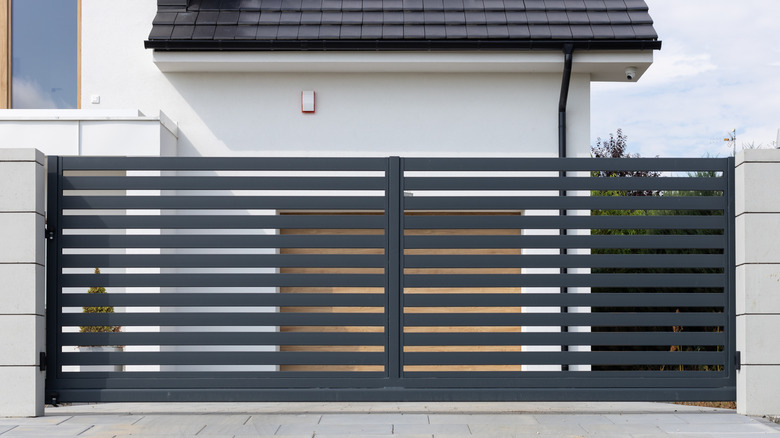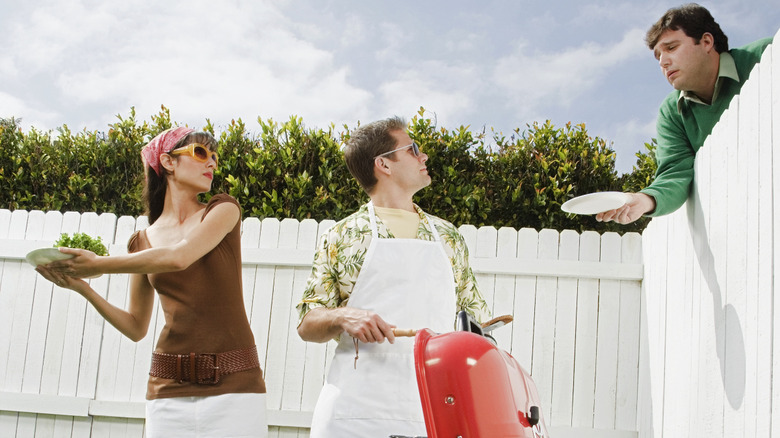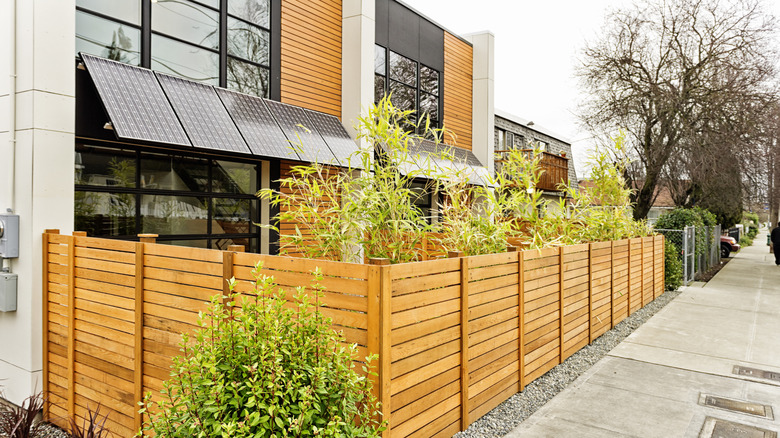Vertical Vs. Horizontal Fence Slats: How To Make The Right Choice For Your Home
Given that it costs upwards of $18,000 to fence an acre of property, it's probably good to have a clear idea of what you want to accomplish with the fence and make choices that support those goals. If you're installing a privacy-style fence, one question will be whether you should use vertically or horizontally oriented fence slats. That is, should the boards that form the barrier itself be parallel to the ground, or set perpendicular as with a picket fence?
There are many ways to look at this question. Perhaps you want to avoid offending your neighbors, or to offend your neighbors, or to increase the value of your property, or to keep the revenuers away from your sour mash still. Maybe low maintenance is a priority for you, because you just read "Mending Wall" and are convinced that not having conversations about good fences with your neighbors is what makes good neighbors. Horizontal and vertical fencing contribute to addressing these issues in different ways.
Apart from keeping toddlers and dogs in or out, what a fence mainly does is cost a lot of money. A stockade-style vertical fence is slightly cheaper at $15 to 20 per square foot, versus $15 to 22 per square foot for a horizontal-slat fence, and neither is likely to be a good investment if you're looking to increase your home value with a fence. (What it says to your neighbors is more complicated.) Aesthetically speaking, you're often better off with no fence than with something that doesn't fit your neighborhood or your home's architecture. Let's look at the pros and cons of each approach.
Pros and cons of vertical fence slats
Strangely enough, vertical fences tend to be sturdier because of their horizontal underlying structure, while horizontal fences can be beefed up with additional vertical posts. Both have potential durability issues; vertical fences are more prone to rot if the picket end grain isn't carefully protected, while horizontal slats can sag if not sufficiently supported. If you're DIYing a wood fence, note that horizontal fences are easier to construct on the sort of level ground you'll find in a heavily landscaped small yard, which brings us to aesthetics. Horizontal fences have a modern vibe that's at home around a manicured urban or suburban plot, and might look out of place surrounding a wooded lot or a half-acre of faux pasture. Vertical fencing handle undulating landscapes more easily by fitting each slat to the contour of the land, racking panels to hug the ground, and other methods.
On the whole, vertical fences are a good choice when utility is your main goal. They tend to be sturdier, are easier for fencing on a slope or anywhere the ground isn't level, and are more common in many neighborhoods. (If you don't want attention, don't build the only horizontal fence in the neighborhood. If you do want attention, a fence might not be the most efficient approach.) They tend to have a more rustic finish keeping with the circumstances they're suited to, which could be a pro or a con. The main downside, aesthetics aside, is that vertical slats are prone to suffering from exposure to water on their tops from weather, on their bottoms from ground moisture, or both.
Pros and cons of horizontal fence slats
Horizontal fences project a clean, more refined, and modern look that's at home next to a mid-century ranch, an up-to-date cottage, or more contemporary architectural styles. It's a little easier to balance privacy needs and design preferences with a horizontal fence, because you can adjust the slat spacing for whatever arrangement suits your purposes – more spacing near the top, for example. Horizontal fences tend to emphasize or exaggerate your property size while deemphasizing the height of your home. Conventional wisdom says horizontal fences are slightly less secure because they're easier to climb, which might be giving more credit to the observation skills and industriousness of the average burglar than is really due. Remember that a good privacy fence not only hides your activities, but also the activities of that guy who's trying to break into your house.
In a nutshell, horizontal fences have a more modern vibe in keeping with the typically less rustic board finish you find on horizontal slats. They make your property look bigger, but can make your house look shorter. They can be slightly less secure and less private. And a horizontal fence that isn't well-supported can sag over time. Also, remember that horizontal fences can be more expensive than their pedestrian vertical brothers.
Remember to keep your goals in mind. The idea that "good fences make good neighbors" is folk wisdom distilled from an insistent misunderstanding of Robert Frost's poem. What good fences actually do is often reduce the number of ways you annoy your neighbor to one ... the fence itself. That might be a benefit.


